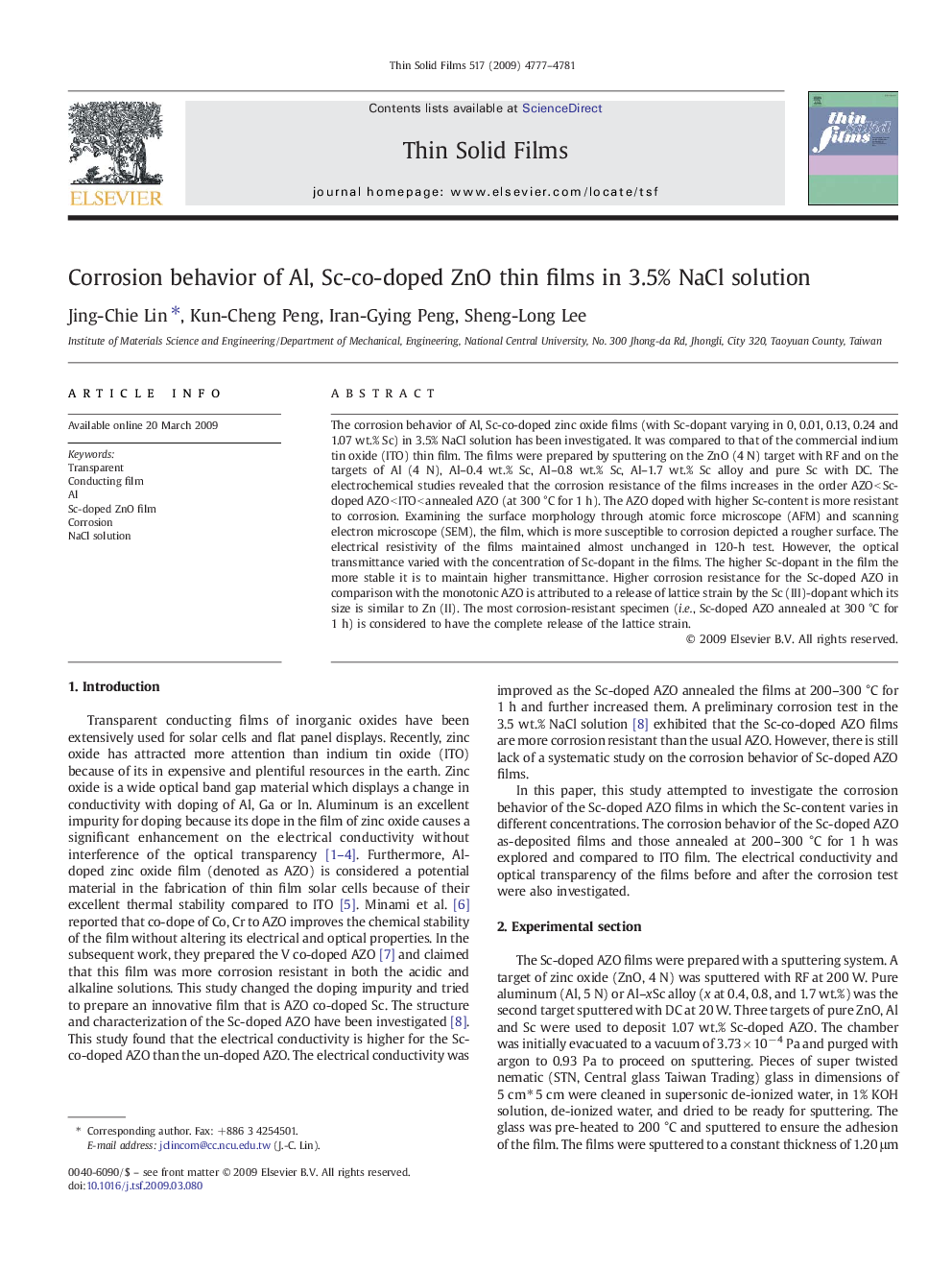| Article ID | Journal | Published Year | Pages | File Type |
|---|---|---|---|---|
| 1673177 | Thin Solid Films | 2009 | 5 Pages |
The corrosion behavior of Al, Sc-co-doped zinc oxide films (with Sc-dopant varying in 0, 0.01, 0.13, 0.24 and 1.07 wt.% Sc) in 3.5% NaCl solution has been investigated. It was compared to that of the commercial indium tin oxide (ITO) thin film. The films were prepared by sputtering on the ZnO (4 N) target with RF and on the targets of Al (4 N), Al–0.4 wt.% Sc, Al–0.8 wt.% Sc, Al–1.7 wt.% Sc alloy and pure Sc with DC. The electrochemical studies revealed that the corrosion resistance of the films increases in the order AZO < Sc-doped AZO < ITO < annealed AZO (at 300 °C for 1 h). The AZO doped with higher Sc-content is more resistant to corrosion. Examining the surface morphology through atomic force microscope (AFM) and scanning electron microscope (SEM), the film, which is more susceptible to corrosion depicted a rougher surface. The electrical resistivity of the films maintained almost unchanged in 120-h test. However, the optical transmittance varied with the concentration of Sc-dopant in the films. The higher Sc-dopant in the film the more stable it is to maintain higher transmittance. Higher corrosion resistance for the Sc-doped AZO in comparison with the monotonic AZO is attributed to a release of lattice strain by the Sc (III)-dopant which its size is similar to Zn (II). The most corrosion-resistant specimen (i.e., Sc-doped AZO annealed at 300 °C for 1 h) is considered to have the complete release of the lattice strain.
